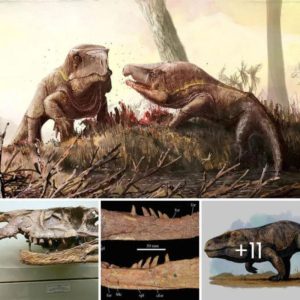
The first published European account of the lost city of Palenque is from 1567, by the Spaniard, Father Pedro Lorenzo de la Nada, who found this vast abandoned Maya city. The local Chol Maya called it “Otolum” or “a land with strong houses,” which the Spanish translated into Palenque, the Spanish word for fortification. Now specialists from the National Institute of Anthropology and History (INAH) have discovered a first-of-its-kind representation of the “young corn god” of maize in the vast ruins of Palenque, Mexico reports AFP.
This is the first time that a stuccoed head of this important deity from the Maya pantheon has been found at Palenque. Located near the Usumacinta River, Palenque is renowned for the outstanding quality of its Maya architecture, sculpture, roof combs, and bas-relief carvings.
This is the first time that a stuccoed head of this important deity from the Maya pantheon has been found at Palenque. Located near the Usumacinta River, Palenque is renowned for the outstanding quality of its Maya architecture, sculpture, roof combs, and bas-relief carvings.

The Young Corn God Head Sheds New Light on Palenque MayaThe ruins of Palenque are stunning and vast, and only 10% of them have been carefully examined. The amazing structures explored at Palenque so far include the Temple of Inscriptions, Temple of the Cross group, the Red Queen skull burial chamber, and the palace complex. These enormous structures are surrounded by forests echoing with the eerie cries of howler monkeys. There are roughly 1,400 documented structures scattered over the roughly 1,800 hectares (about 4,400 acres) site.
Mayan Child Sacrifices with ‘Divine’ Obsidian and Jade Discovered in GuatemalaMaya Gateway to the World Below: Balankanché Cave, Throne of the Tiger Priest
In July of 2021 the INAH set up an interdisciplinary team, co-led by archaeologist Arnoldo González Cruz, a researcher at the INAH Chiapas Center (whose also renowned for the salvage work performed on the Red Queen), and restorer Haydeé Orea Magaña. While working at Palenque, the INAH team discovered a rather deliberate alignment of stones in a corridor that connected House B of the palace, with adjacent House F.
When they removed the dirt and fill under the corridor, they found a receptacle which contained a severed stucco head in a small pond. First, the nose and half-open mouth of the divinity emerged. It was placed like an offering on the pond floor, enclosed in stuccoed walled enclosure measuring 1 x 3 meters (3.2 x 9.8 feet). This was probably done to simulate the entry of gods to the underworld in an aquatic environment, as per the INAH press release .

The Stuccoed Young Maize God Head Was Aligned East to West“The discovery of the deposit allows us to begin to know how the ancient Maya of Palenque constantly relived the mythical passage about the birth, death and resurrection of the maize deity ,” added González Cruz.
His colleagues Carlos Varela Scherrer and Wenceslao Urbina Cruz, who worked on this project as field chiefs, added that the stuccoed head, 45 x 16 x 22 centimeters (18 x 6 x 8.7 inches), was purposely aligned east to west. This was done to symbolically mark the birth of the corn plant with the first rays of the sun . The sculpture was placed on a ceramic tripod, also found at the site.
The iconographic style of the Palenque young corn god was almost identical to the Tikal severed heads from the Late Classic (600-850 AD) and Early Classic (150-600 AD) periods. The Palenque head has been dated to the Late Classic period (700-850 AD).
“The sculpture, which must have been modeled around a limestone support, has graceful features: the chin is sharp, pronounced and split; the lips are thin and projecting outwards – the lower one slightly downwards – and show the upper incisors. The cheekbones are fine and rounded; and the eyes, elongated and thin. From the wide, long, flattened and rectangular forehead, a wide and pronounced nose is born,” summarized archaeologists Scherrer and Urbina Cruz.

Nature’s Elements and Maya PhilosophyAs per Maya philosophy, which flourished and developed at the time that Europe was still in the Dark Ages , the Maya saw the universe as a trifecta. It was divided into the sky, the earth, and the underworld.





